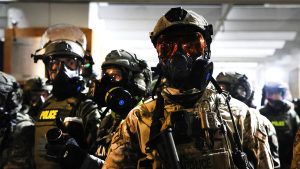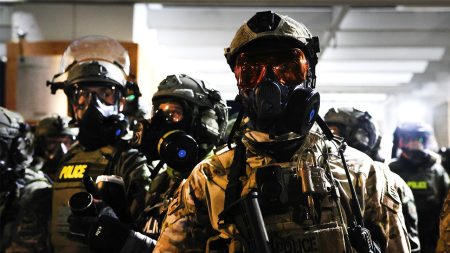Ukraine-Russia Peace Prospects: Analyzing Trump’s Bold Diplomatic Gambit
Diplomatic Crossroads: Evaluating Trump’s Promise to End a Complex Conflict
As the war in Ukraine approaches its third year with no clear resolution in sight, former President Donald Trump’s ambitious campaign pledge to swiftly end the conflict has captured international attention. The promise—bold in its simplicity yet light on specifics—has ignited intense debate among foreign policy experts, military strategists, and political observers worldwide. Our investigation reveals a complex diplomatic landscape where Trump’s proposed peace initiative faces formidable challenges but also potential opportunities that previous approaches may have overlooked.
“I will have the war settled before I even take office,” Trump declared during a recent campaign rally, projecting his trademark confidence in personal diplomacy. This assertion comes at a critical juncture when Ukrainian forces continue their defensive operations against Russian military advances in the eastern regions, while Western allies grapple with sustaining long-term military and economic support for Kyiv. The former president’s claim rests primarily on his self-described rapport with both Russian President Vladimir Putin and Ukrainian President Volodymyr Zelensky, relationships he believes can facilitate direct negotiations where traditional diplomatic channels have faltered.
Foreign policy veterans across the political spectrum express measured skepticism about the feasibility of Trump’s timeline, while acknowledging that fresh diplomatic approaches deserve consideration. “Any serious peace negotiation would require addressing fundamental security guarantees, territorial sovereignty, and accountability—issues that have proven intractable thus far,” explains Dr. Evelyn Farkas, former Deputy Assistant Secretary of Defense for Russia, Ukraine, and Eurasia. The proposed Trump strategy appears to hinge on leveraging American economic influence and potentially offering concessions that the current administration has been unwilling to put on the table. However, these same concessions raise profound concerns about undermining Ukrainian sovereignty and rewarding Russian aggression—outcomes that could reverberate through international relations for decades.
The Geopolitical Chessboard: Stakeholders, Strategies, and Regional Implications
The conflict in Ukraine has evolved beyond a bilateral dispute into a complex geopolitical contest involving multiple stakeholders with divergent interests. Russia’s strategic objectives extend beyond territorial acquisition to include weakening NATO cohesion and asserting regional dominance, while Ukraine fights for its sovereignty and European integration ambitions. Meanwhile, European allies balance solidarity with Kyiv against energy security concerns and domestic political pressures that have intensified as the conflict continues.
“Any viable peace framework must account for the security architecture of Eastern Europe and address the legitimate concerns of all parties involved,” notes Ambassador William Taylor, former U.S. envoy to Ukraine. The Trump approach, according to sources familiar with his thinking, would likely involve direct pressure on Ukraine to accept territorial compromises in exchange for security guarantees and reconstruction assistance. Simultaneously, Russia would be offered sanctions relief and international reintegration conditional upon ceasing hostilities and respecting negotiated boundaries. This formula, while potentially expedient, raises profound questions about the precedent it would set for international law and the territorial integrity norm that has underpinned global order since World War II.
The regional implications extend well beyond Ukraine’s borders. Baltic states and Poland view the conflict through the lens of their own security vulnerabilities, while Turkey and other Black Sea nations have strategic interests in the conflict’s resolution. China, observing carefully, sees the Western response to Russian aggression as a potential template for international reaction to any future moves regarding Taiwan. “This isn’t just about ending a war—it’s about the rules of the international system going forward,” explains Dr. Michael Kimmage of the Center for Strategic and International Studies. “The terms of any settlement will send signals about which principles are negotiable and which are not.”
Economic Dimensions: Sanctions, Reconstruction, and Global Market Impacts
The economic dimensions of the conflict present both obstacles and potential incentives for resolution under a Trump administration. Western sanctions against Russia have proven more resilient than many initially predicted, creating significant pressure points on the Russian economy despite Moscow’s adaptation strategies. Meanwhile, the staggering cost of Ukraine’s reconstruction—estimated between $486 billion and $750 billion by the World Bank—presents questions about financing responsibilities that would inevitably feature in any peace negotiation.
“Economic levers remain among the most powerful tools for influencing Russian strategic calculations,” explains Dr. Maria Snegovaya, senior fellow at the Center for a New American Security. Trump’s approach would likely prioritize economic incentives, potentially offering Russia a pathway to sanctions relief and reintegration into global markets in exchange for territorial concessions and security guarantees. This strategy aligns with Trump’s preference for transactional diplomacy but raises concerns about undermining the sanctions regime before achieving sustainable peace outcomes.
The global economic implications extend far beyond the immediate conflict zone. Energy markets, already destabilized by the war, would respond immediately to peace prospects, potentially benefiting European economies currently paying premium prices for non-Russian energy sources. Agricultural markets would likewise stabilize as Ukraine’s vital grain exports resume normal operations. “There’s a significant economic dividend to peace that could benefit multiple stakeholders,” notes economist Anders Åslund, “but the distribution of those benefits will depend entirely on the terms of any settlement.” The Trump approach would likely emphasize these economic benefits while downplaying the political and territorial compromises that might be required to achieve them.
Military Realities: Battlefield Dynamics and Security Architecture
The military situation on the ground introduces a sobering reality check to diplomatic aspirations. After nearly three years of intense combat, the conflict has settled into what military analysts describe as a war of attrition with neither side capable of achieving decisive victory in the near term. Russian forces maintain control over approximately 18% of internationally recognized Ukrainian territory, including Crimea and portions of eastern Ukraine, while Ukrainian counteroffensives have demonstrated resilience but not breakthrough capabilities against entrenched Russian defenses.
“The battlefield reality creates constraints and opportunities for negotiators,” explains Lieutenant General (Ret.) Ben Hodges, former commander of U.S. Army Europe. “Russia’s inability to achieve its maximal objectives and Ukraine’s demonstration of effective resistance create conditions where both sides might consider compromise—but neither can be compelled to accept terms they view as existentially threatening.” Trump’s approach would likely acknowledge these military realities while attempting to craft security arrangements that both sides could accept, potentially including limited international peacekeeping forces in disputed territories.
The broader security architecture presents equally complex challenges. Ukraine’s aspirations for NATO membership—a red line for Moscow—would require creative solutions that provide Kyiv with meaningful security guarantees without triggering Russian security concerns. “The Trump team would need to design security arrangements that respect Ukrainian sovereignty while acknowledging Russia’s opposition to NATO expansion eastward,” notes Charles Kupchan, senior fellow at the Council on Foreign Relations. Models could include neutrality with Western security guarantees, phased integration into European security structures, or novel regional security frameworks—all requiring delicate balancing of competing interests.
Diplomatic Pathways: Negotiation Formats and International Engagement
The diplomatic infrastructure for peace negotiations presents its own set of challenges and opportunities. Previous formats—including the Minsk Agreements, Normandy Format, and Istanbul talks—produced limited results due to fundamental disagreements about Ukrainian sovereignty, Russian security demands, and implementation sequencing. Any renewed peace effort would need to address these structural challenges while creating incentives for genuine compromise.
“The diplomatic format is just as important as the substance of negotiations,” explains Ambassador John Herbst, former U.S. Ambassador to Ukraine. “All parties need to perceive the process as legitimate and balanced.” Trump’s approach would likely favor direct bilateral engagement between Washington and Moscow, potentially sidelining European partners and raising concerns about decisions being made about Ukraine without adequate Ukrainian input. Alternative approaches might include a more inclusive international conference model with guarantor nations or a phased negotiation process addressing immediate security concerns before tackling more contentious territorial questions.
The international community’s role would prove crucial in any peace process. UN involvement could provide legitimacy and peacekeeping capabilities, while financial institutions including the IMF and World Bank would be essential for reconstruction efforts. “No single nation—not even the United States—can impose peace without broader international buy-in,” cautions Richard Haass, president emeritus of the Council on Foreign Relations. “The sustainability of any agreement depends on international legitimacy and enforcement mechanisms that extend beyond a single administration.” This international dimension presents particular challenges for Trump’s approach, which traditionally favors bilateral deals over multilateral frameworks.
Prospects for Peace: Realistic Assessment and Long-term Considerations
A clear-eyed assessment suggests that ending the Russia-Ukraine war before a potential Trump inauguration in January 2025 represents an exceptionally ambitious timeline given the complexity of issues involved. However, initiating a credible peace process within that timeframe might be achievable with sufficient diplomatic commitment and creative problem-solving. The most realistic scenario would involve phased agreements addressing immediate security concerns while establishing frameworks for resolving more intractable issues over longer timeframes.
“Peace processes rarely follow linear trajectories,” notes Ambassador William Taylor. “They typically involve advances and setbacks, interim agreements, and confidence-building measures before reaching comprehensive settlements.” The Trump approach would need to accommodate this reality while maintaining momentum toward meaningful conflict resolution. Critical success factors would include maintaining Western unity during negotiations, ensuring Ukrainian agency in determining its future, and creating verification mechanisms that both sides trust.
The long-term implications of any peace agreement would extend far beyond ending immediate hostilities. Questions about NATO’s future role in European security, Russia’s relationship with the West, and the precedents set for territorial disputes worldwide would shape international relations for decades. “How this war ends will influence how future conflicts begin—or are deterred,” observes Dr. Fiona Hill, former National Security Council senior director for European and Russian affairs. The Trump approach, with its emphasis on deal-making and immediate results, would need to incorporate these longer-term strategic considerations to achieve a peace that endures beyond the initial handshakes.
As global attention focuses on the evolving situation in Ukraine and the potential for new diplomatic initiatives, the fundamental question remains whether Trump’s confidence in his negotiating abilities can translate into a sustainable peace that respects Ukrainian sovereignty while addressing legitimate security concerns on all sides. The answer lies not in campaign promises but in the complex interplay of military realities, economic pressures, diplomatic skill, and political will that will ultimately determine when and how this consequential conflict reaches its resolution.










